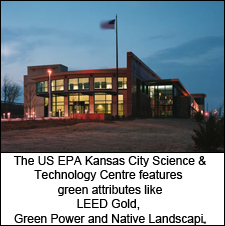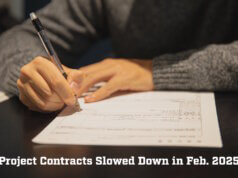 Whether it is an existing building or a new construction, there are several ways of going the green path. Vani Bahl, Principal Architect, Arcriam Associates, Associate American Institute of Architects, outlines steps for the best green buildings.
Whether it is an existing building or a new construction, there are several ways of going the green path. Vani Bahl, Principal Architect, Arcriam Associates, Associate American Institute of Architects, outlines steps for the best green buildings.
The best ‘site’ forward: Good site selection is foundation of a green building. Do not build on sensitive habitats like wetlands, flood zones, or endangered wildlife habitats. Consider developing on a reclaimed Brownfield or on in-fill and Greyfield sites (previously developed site with all utilities in place) instead of clearing undeveloped lands known as Greenfields. Proximity to mass transit and community resources will go a long way in not only minimizing automobile dependence but also creating strong self-sustainable green communities and neighborhoods.
Cluster buildings on the site to minimize environmental impact. Build up instead of out; keep roads and service lines short. Orient the buildings on east-west axis, and take advantage of existing vegetation on the east and west sides of the buildings to considerably reduce the cooling loads. Use shrubbery to channel cool air into the buildings. Design landscapes to avoid stormwater runoff into storm sewers; facilitate on-site rainwater harvesting.
Energy miser building: Design thermally efficient building shell by using high levels of insulation, high performance windows, light colors for walls and roofs, and minimum use of glass on east and west exposure. Tie in alternative and renewable energy sources like solar, wind, and geothermal. Passive design strategies like building profile and orientation, natural lighting, and passive solar design will affect building energy performance positively. Reduce the electric loads from lighting, equipment, and appliances.
Material as Cultural and Energy Resource: Pick sustainable building materials which have recycled and reused content, low harmful gas emissions, sustainably harvested materials, and are locally available. Use dimensional planning and other material efficiency strategies which will help reduce the amount of building materials needed and also the construction costs.
A lifecycle assessment (LCA) will help assess a full range of impacts including embodied energy, global warming potential, resource use and pollution, associated with all cradle-to-grave stages of a process: from extraction of raw materials through materials processing, manufacture, distribution, use, repair and maintenance, and disposal or recycling.
 Water Wise: Design dual plumbing to use water from sinks, showers, or clothes washers (graywater) for reuse in WCs and for landscape irrigation. Water efficient equipment like water-conserving toilets, showerheads, and faucet aerators not only reduce water use, they also reduce demand on septic systems or sewage treatment plants. Reducing hot water use also saves energy. Rainwater harvesting can be used to cool the buildings as well as for irrigation. Separate the meters for water use in buildings and landscape. Use mirco-irrigation to water nonturf areas and state-of- the art irrigation controllers. Design xeriscapes or landscape with drought-resistant native plants and perennial groundcovers.
Water Wise: Design dual plumbing to use water from sinks, showers, or clothes washers (graywater) for reuse in WCs and for landscape irrigation. Water efficient equipment like water-conserving toilets, showerheads, and faucet aerators not only reduce water use, they also reduce demand on septic systems or sewage treatment plants. Reducing hot water use also saves energy. Rainwater harvesting can be used to cool the buildings as well as for irrigation. Separate the meters for water use in buildings and landscape. Use mirco-irrigation to water nonturf areas and state-of- the art irrigation controllers. Design xeriscapes or landscape with drought-resistant native plants and perennial groundcovers.
Healthy Buildings: Good environmental quality in the buildings will aid in enhancing worker efficiency as well as reduce the rate of respiratory diseases, allergies, and asthma. It is imperative to choose construction materials, interior finishes, adhesives, sealants and paints with low Volatile Organic Compounds (VOCs). High-efficiency ventilation and in-duct filtration is essential component of good indoor air quality. Install entryway dirt-capturing systems.
|
Reduce, Reuse, Recycle: The greenest building may actually be an old building restored for adaptive reuse. Throughout the construction process make sure to recycle waste materials. Reduce landfill pressure and save natural resources by using salvaged materials: lumber, millwork, certain plumbing fixtures, and hardware, for example. Test these materials for lead paint and asbestos without sacrificing energy efficiency or water efficiency by reusing old windows or toilets.
Operations and Maintenance: Green building strategies do not mean much if they are not used as intended. Building commissioning is imperative for successful functioning of a green building. Regular testing and adjusting the mechanical, electrical, and plumbing systems to ensure that all equipment meets design criteria. It also includes instructing the staff on the operation and maintenance of equipment. Over time, building performance can be assured through measurement, adjustment, and upgrading. Proper maintenance ensures that a building continues to perform as designed and commissioned.











